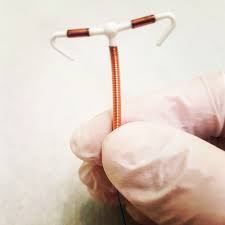More and more women are coming forward with stories about Paragard birth control devices that broke apart after implantation or during removal and left IUD fragments inside their bodies. The Paragard IUD has been on the market in the United States for more than 30 years, but the device has made headlines recently because of a growing number of lawsuits that claim the IUD is prone to fracture and can cause broken fragments to become embedded in other organs, possibly causing permanent internal injuries. If you or someone you love has suffered severe injuries allegedly caused by a defective Paragard IUD, you may qualify for compensation. Contact our consumer advocates at the Leading Justice as soon as possible to find out how we can help. With a knowledgeable Paragard injury attorney on your side, you may be able to recover damages such as medical expenses, lost wages, pain and suffering, loss of consortium and loss of enjoyment of life.
What is the Paragard IUD?
Paragard is one of several different intrauterine devices (IUDs) available in the United States and is currently the only non-hormonal IUD option, which makes it a popular alternative to Mirena and other birth control implants that use the hormone levonorgestrel to prevent pregnancy. The Paragard IUD is a small device made up of plastic and copper components shaped like a “T” and the device is inserted into the uterus by a healthcare provider during a routine office visit. Paragard is designed to provide continuous pregnancy prevention for up to 10 years, and according to its manufacturer, can be removed at any time. However, thousands of complaints by women implanted with the Paragard IUD indicate that the birth control device may be prone to breakage and embedment, which may make removal difficult and put users at risk for serious internal injuries. Some women may even require a hysterectomy to remove the fractured pieces of the Paragard IUD if they become deeply embedded inside the uterine tissue.
Paragard IUD Side Effects and Lawsuits
Since 2010, the FDA has received more than 1,600 reports of adverse events involving the Paragard IUD breaking apart or fracturing, with more than 700 of those reports classified as “serious,” and as many as 15 patients have died over the years as a result of potentially avoidable Paragard complications. According to a growing number of lawsuits brought against the makers of the Paragard IUD, had Teva Pharmaceuticals or The Cooper Companies properly disclosed the potential side effects of Paragard, thousands of women could have avoided suffering painful, permanent internal injuries allegedly caused by Paragard IUDs that were expelled, fractured during removal, became embedded in the uterus or perforated the uterine wall. Paragard is touted as being more than 99% effective at preventing pregnancy, but that still means that one in 100 women experience unintended pregnancy while using a Paragard IUD. And if pregnancy occurs while a Paragard IUD is being used, the risk of having an ectopic pregnancy – an extrauterine pregnancy that can cause life-threatening bleeding and organ damage – is significantly higher.
Several woman have pursued Paragard IUD injury lawsuits against Teva Pharmaceuticals and The Cooper Companies this year, alleging that the manufacturing companies knew the copper IUD was dangerous and unreasonably defective, yet withheld the risks of Paragard from patients and healthcare providers. In one lawsuit filed in Florida in September 2020, the plaintiff stated that she went to her doctor to have her Paragard IUD removed in 2018, ten years after it was implanted. When the IUD was retrieved, it was discovered that one of the arms was missing and remained in her uterus. In another Paragard lawsuit filed that same month, a South Carolina woman sought compensation for injuries she allegedly sustained as a result of her Paragard IUD migrating out of position and fracturing. According to the complaint, a surgeon attempted to retrieve the broken components of the IUD but was unsuccessful.
Seeking Compensation for Paragard IUD Injuries
Paragard is designed to remain in place for up to ten years, providing women with a reversible form of long-term pregnancy prevention. However, a 2006 study found that 10% to 13% of women using an IUD will have the device removed during the first year of use due to increased bleeding and pain. Unfortunately, many women who attempt to have their Paragard IUD removed discover upon removal that pieces of the device are missing, usually either the copper coil surrounding the stem and/or arms or the arms themselves. In fact, Paragard may be prone to breaking apart inside the body shortly after implantation or during the removal procedure, leaving affected women with potentially painful and permanent injuries. If you or a member of your family was implanted with a Paragard IUD and subsequently suffered complications like device breakage or fracture, chronic pain, ectopic pregnancy, device migration or expulsion of the device from the uterus, you may have grounds to file a Paragard injury lawsuit against the device manufacturer. Contact our consumer advocates at Leading Justice today to discuss your legal options.

